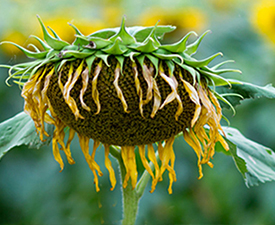 2019 was the hottest year on record for Australia, with the temperature reaching 1.52C above the long-term average. There’s no doubt it’s been a very tough year on plants, so now is a good time to talk about how to get them looking their best again.
2019 was the hottest year on record for Australia, with the temperature reaching 1.52C above the long-term average. There’s no doubt it’s been a very tough year on plants, so now is a good time to talk about how to get them looking their best again.
Although, there has been some rain, you still need to keep up the moisture. It’s also important to give them a gentle feed. Unfortunately, many people think they should feed a struggling plant heavily at this time of the year, simply because it looks a little sick, has burnt leaves or has dried out due to a lack of moisture.
Unfortunately, heavy fertilising encourages a lot of rapid new growth (particularly if the nitrogen level is high), and this leads to a large increase in leaf area. This new growth may not be hardy enough to survive another hot weather event, and as the plant is already stressed, the roots may not be able to support the new growth. This is because a plant can only carry as many leaves as the root system is capable of providing nutrients and moisture for.
During hot and dry conditions, the plant has most likely lost some of it root system, unless you have kept up with mulching and watering. By giving your stressed plant a gentle feed now, it allows the roots to keep up with the new above-ground growth. As plants use their reserves of nutrients to come back from stress, and young growth can get burnt or dehydrated due to excessive growth then the plants often don’t recover a second time.
Seamungus is an ideal recovery fertiliser, as the level of nutrients is sufficient for the plant to put on new growth without disproportionate amounts of nitrogen. Seamungus contains composted seaweed which stimulates root development – this is essential for the recovery process. In addition, Seamungus has a great water-holding capacity (it can retain up to 70% of its own weight in moisture), whilst also helping to eliminate some of the non-wetting properties many soils have after summer.
Amongst other natural plant growth hormones, Seamungus also contains the amino acid Tryptophan which is required in the synthesis of the plant growth hormone indole-3-acetic acid, which enhances root growth, photosynthesis and plant metabolism. By enlarging the root system of your plant, it will have better access to nutrients, and more perhaps more importantly, increased resistance to heat and drought stress, as well as enhanced disease resistance and better flowering.
So whilst there is still a chance of some hot weather throughout March, reviving your stressed plants with Seamungus makes a lot of sense. We call it a soil conditioner because that is exactly what it does – it just brings your soil back to life. Plants love it and the soil microbes get stimulated by it.
